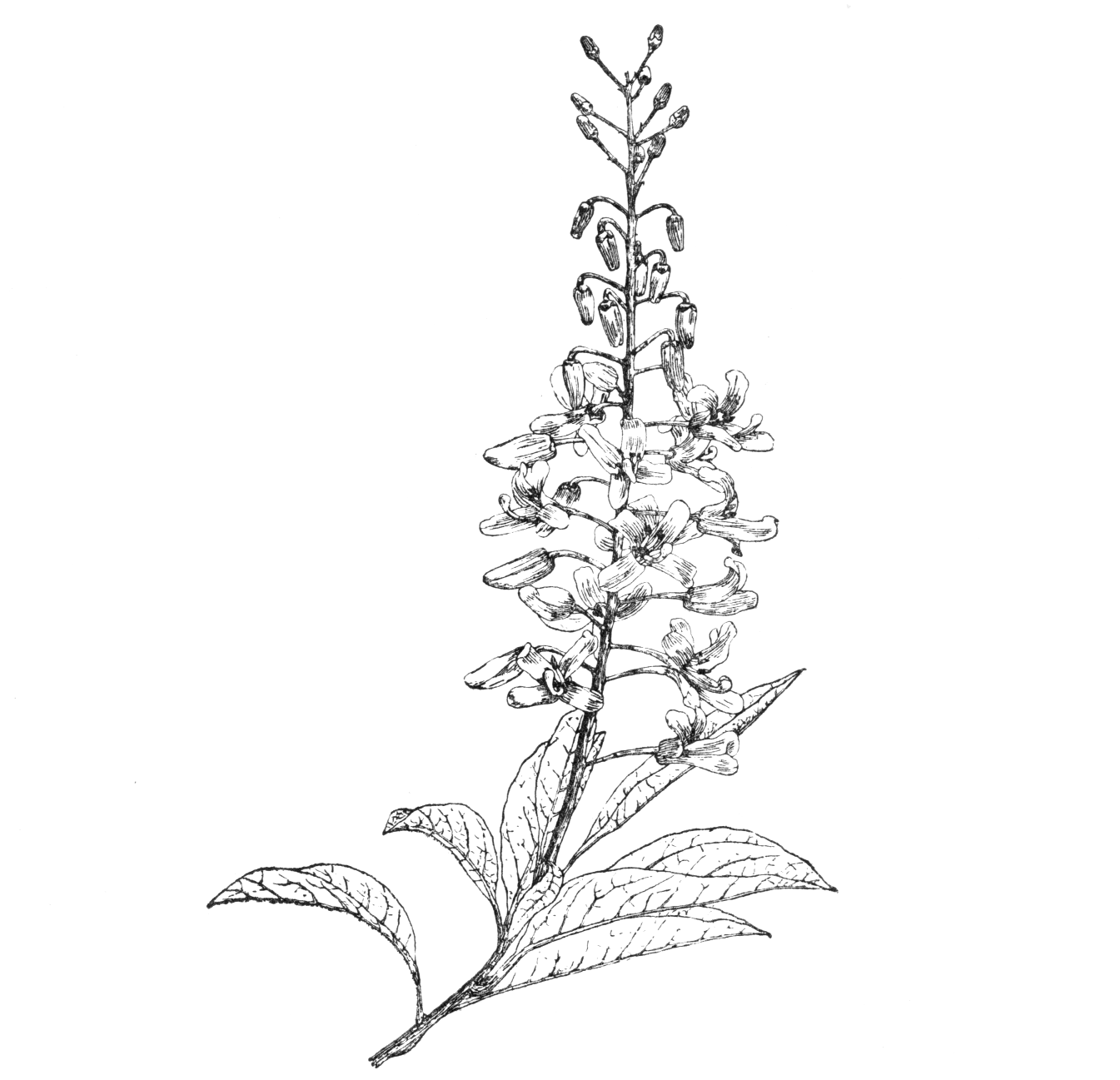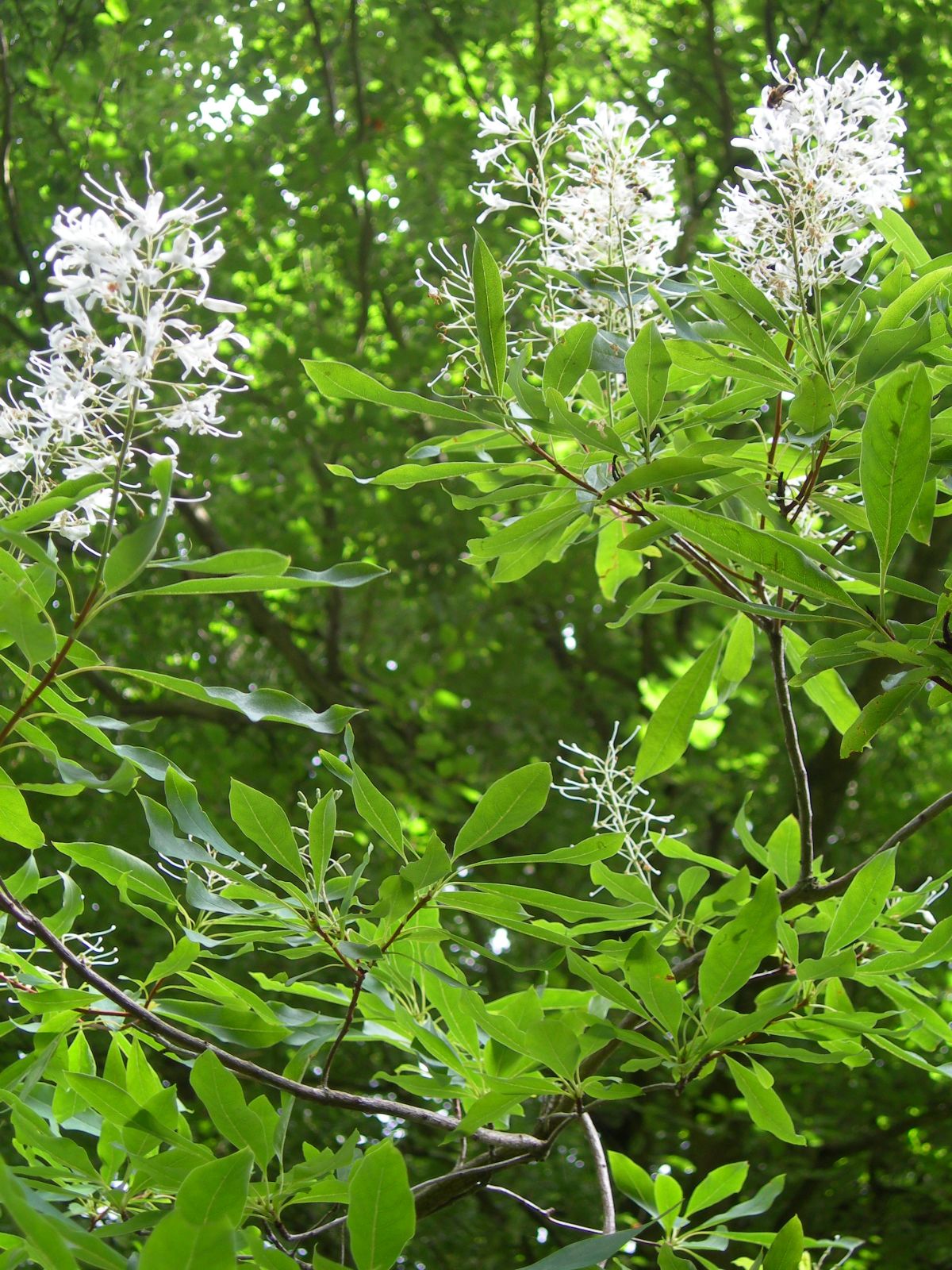Elliottia racemosa
Credits
Article from Bean's Trees and Shrubs Hardy in the British Isles
Recommended citation
'Elliottia racemosa' from the website Trees and Shrubs Online (treesandshrubsonline.
Genus
A deciduous shrub 4 to 10 ft high, or occasionally a small tree twice as large; young shoots downy. Leaves narrowly oval or obovate, tapering towards both ends, 2 to 5 in. long, 3⁄4 to 13⁄4 in. wide, dark dull green and glabrous above, paler and sparsely hairy beneath; stalk 1⁄4 to 1⁄2 in. long, hairy. Flowers thinly arranged in a terminal raceme or panicle 4 to 10 in. high, pure white, slightly fragrant; petals four, oblong, rounded at the end, 5⁄8 in. long, reflexed, downy at the margins; calyx 1⁄8 in. diameter, with four rounded lobes; stamens eight, shorter than the petals, and with broad, flattened stalks; style as long as the petals. Flower-stalk white, slender, usually one- sometimes three-flowered, 1⁄2 to 3⁄4 in. long, with a pair of tiny bracts midway. Fruit a flattened-globose capsule 3⁄8 in. wide; seeds winged. Bot. Mag., t. 8413.
Native of Georgia and S. Carolina in the southern United States, and only found in a few isolated spots. It was introduced to England in 1894, when Mr Berckmans of Augusta, Georgia, sent a plant to Kew. It first flowered in July 1911. It was believed at one time that this beautiful and interesting shrub had become extinct in the wild, but about 1933 W. A. Knight of Biltmore, North Carolina, discovered the species growing in quantity in Georgia and reintroduced it to cultivation by means of seeds and young plants in 1937 (see New Flora and Sylva, Vol. 10, pp. 154–64, 1938). In 1958 arrangements were being made for the main area where the species grows to be carefully preserved.
From the Supplement (Vol. V)
This species was introduced to Britain in 1974 by means of rooted cuttings sent by the Arnold Arboretum and has already flowered in several gardens. See further the note by A. D. Schilling in The Garden (Journ. R.H.S.), Vol. 109, pp. 349–50 (1984).


